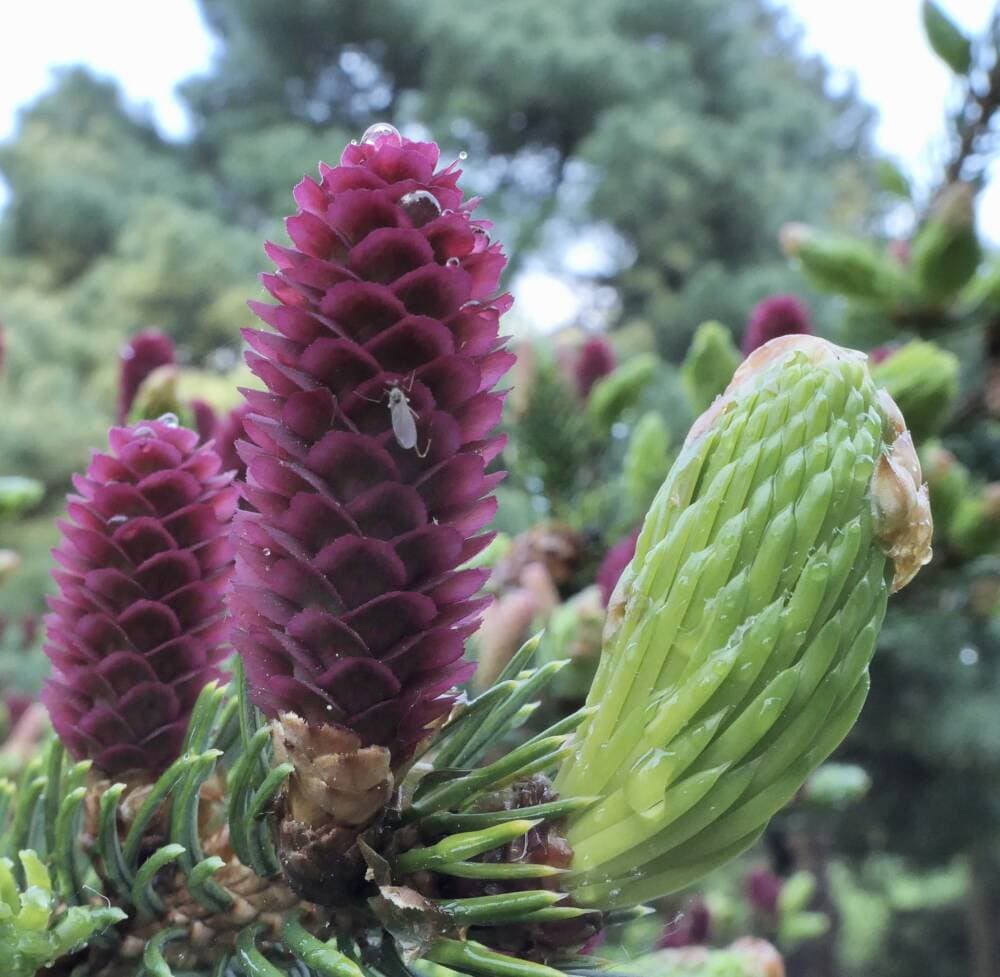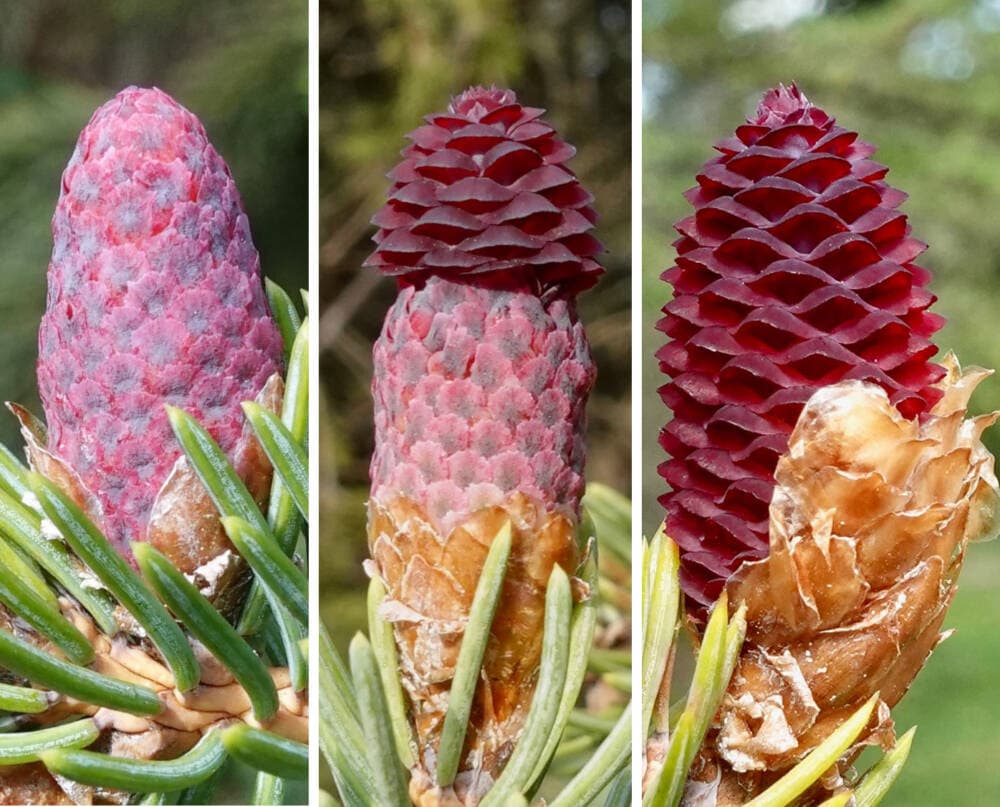Advertisement
A spruce tree at the Arboretum has produced a rare batch of half male, half female cones

Every spring the conifer trees at the Arnold Arboretum burst out in buds: hundreds of tiny cones, often bright pink, red or yellow. This year, one young spruce is putting on an extra-special show: most of its cones are rare hermaphrodites.
The Lijiang spruce near the south end of Conifer Path usually puts out two types of cones: some pink, pollen-producing males and some red, seed-making females. But this year most of the buds on the tree are half-pink, half-red; male on the bottom and female on the top.
In botany terms, they're hermaphrodites — not unusual in the plant world, but rare in such abundance for this tree.
"At the Arboretum I’ve seen these cones on this tree before, but I've never noticed such a large proportion of them," said Arnold Arboretum Director William Friedman.
He added that he's "totally obsessed" with budding conifer trees, and especially excited about this one. "It's pretty wonderful stuff," he said.

He's not the only one interested — on a recent stroll he saw eight people gathered around the tree.
Friedman says nobody’s sure how or why a tree buds this way. Such events are so rare, that he's not sure what this year's buds mean for the overall health of the tree, its future offspring, or whether it will repeat the same performance next year.
But Friedman says he's glad that the tree is piquing public interest.
"A lot of people probably don't think about the fact that plants have sex," he said. "I mean, humans aren't the only creatures to reproduce! There's an interesting world out there."

Friedman said he hopes the tree will help people reflect on nature's many splendid surprises, and also work to protect it.
"I want people to love nature," he said. "You can read a million articles about climate change, but if you don't feel a certain connection to nature, I'm not sure you'll do as much."
